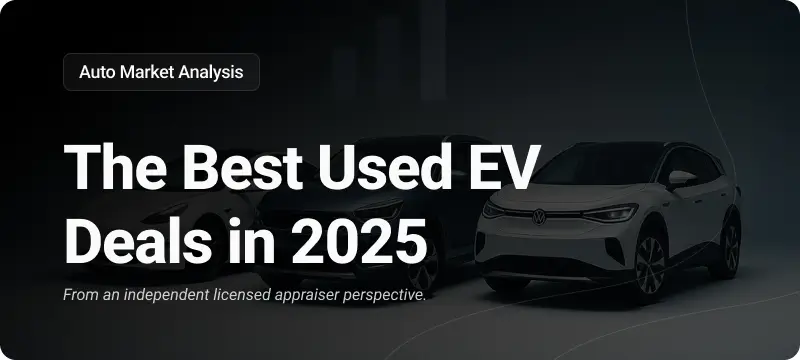Best Cars for Teen Drivers and Safety Tips for Parents
Your newly licensed young driver is ready to hit the road, and as a parent, you’re likely on the hunt for the best cars for teens. Whether you’re looking for the ideal vehicle within a budget or simply seeking valuable tips for your search, we’ve got you covered.
Above all else, keep safety as your top priority. Teen car accidents are the leading cause of death for 15- to 18-year-olds in the United States, as per the United States Department of Transportation. Safety is the absolute cornerstone for every car on our list.
You can access the PDF of this article by clicking here.

The Statistics
The Insurance Institute for Highway Safety (IIHS) offers some valuable insights. It’s worth noting that, in the United States, only elderly individuals (80+) drive less than teenagers (16- to 19-year-olds).
Surprisingly, teen accidents and crash-related deaths are unacceptably high, making motor vehicle crashes the third leading cause of teenage fatalities, trailing behind homicide and suicide.
The latest IIHS data from 2021 reveals that an average of eight 16- to 19-year-olds per day were killed in car crashes in the U.S. Furthermore, a staggering 56% of deaths among passenger vehicle occupants in this age group were teenage drivers themselves. Additionally, more than 1,300 teen drivers aged 15 to 20 years old lost their lives in crashes, taking 900 teen passengers with them.
The focus is unequivocally on safety.
The Best Cars and SUVs for New Drivers
New drivers, especially teenagers, face numerous risks, including distracted driving, speeding, and driving under the influence. According to the Centers for Disease Control and Prevention (CDC), in 2020, over 2,800 teenagers between the ages of 13-19 lost their lives in motor vehicle accidents, with 227,000 sustaining injuries. In the following year, more than 3,000 drivers aged 16-19 were killed in crashes, according to the IIHS.
The CDC identifies several risk factors that heighten the danger for teen drivers and their passengers. Inexperience can lead young drivers to overestimate their abilities and take risks, while nighttime driving and distractions like cell phones or chatty passengers can divert their attention from the road. Speeding and seatbelt neglect are also common among young drivers.
This underscores the importance of ensuring your teen has access to a vehicle that is safe, reliable, and equipped with technology to enhance safety. Consequently, all the vehicles on our Best Cars for Teens list meet strict criteria to ensure their suitability for new drivers.
Selecting the Best Cars for New Drivers
The internet is your best friend when it comes to researching vehicles for your teen driver. If our recommendations don’t align with your preferences, conducting independent research is a straightforward but crucial step. While it may require some time and effort, understanding our selection process will guide you through the process.
The Cost of Adding a Teen to Car Insurance
The bottom line is that adding a teenager to your car insurance will lead to a substantial increase in your premiums, except if you live in Hawaii, where the increase is practically non-existent. Elsewhere, the premium can surge by 150% or more, and it’s typically higher for male teenage drivers.
Keep in mind that certain cars are more expensive to insure than others. However, a substantial portion of the added insurance cost for new drivers comes from liability coverage, which covers property damage and bodily harm to others. Insurance providers consider various factors when calculating your premium, so only an insurance company representative can provide a specific estimate.
To avoid any unwelcome surprises, it’s crucial to involve your insurance agent in the process as early as possible.
Lowering Car Insurance Rates for Teenagers
Your insurance provider may offer several discounts to alleviate the insurance burden. For instance, Progressive extends up to a 10% discount to students with a Grade B average or better. Some companies even provide a discount if your teen takes a driving safety course, so it’s worth discussing this with your insurance agent.
Even if your insurance provider doesn’t offer a safe driver school discount, enrolling your new driver in a safety program can be a prudent choice. These schools help young drivers enhance their awareness and skills behind the wheel.
Not All Cars Are Created Equal for Teen Drivers
This is where common sense comes into play. As a responsible adult, you may no longer view the vehicle you drive as a reflection of your identity or a status symbol. However, your less-experienced teenage driver might have a different perspective. They may have a dream car list filled with cars, trucks, and SUVs that might not be suitable or safe for them, regardless of affordability.
In our selection process, we’ve established certain standards for vehicles deemed suitable for teen drivers. It’s essential to strike a balance between the cost of the vehicle and its safety features.
While newer models are likely to offer more advanced safety features and driver assists than older ones, the price of a new car may not be within reach for many families. When budgeting for a vehicle, it’s wise to also consider potential repair and bodywork costs.
If your budget allows, vehicles from 2013 and onwards are equipped with the “Big Three” of safety features mandated by the federal government: anti-lock brakes, traction control, and stability control.
By 2018, car manufacturers were required to comply with the federal government mandate for rearview cameras in all new cars, and by 2017, most manufacturers had already incorporated them. We highly recommend this feature for additional safety.
If you’re considering a higher budget, electric vehicles (EVs) are an option to explore. However, it’s essential to be mindful that EVs deliver peak torque, which is the power that accelerates the vehicle, the instant the driver presses the accelerator. This instant power may be too much for a teen driver to handle safely.
Types of Cars to Avoid
While tiny city cars might be more affordable and offer better gas mileage than compact or midsize vehicles, they often lag in safety when compared to full-size trucks or SUVs on the road. Sports cars might look appealing, but they can tempt your teenager to drive beyond their skill level. On the other hand, big SUVs or pickup trucks may provide more protection in a collision, but they could be too large for your teen to handle and more challenging to park, not to mention the fuel economy concerns.
High-horsepower cars may be high on the wish list for some teen drivers, but even experienced drivers can struggle to control them on wet roads. Furthermore, increased horsepower leads to higher insurance premiums and an increased risk of accidents.
Safety Features for Teen Drivers
Safety technology has come a long way and often contributes to the rising prices of new cars. As automakers work toward autonomous vehicles, an array of new technologies designed to assist drivers are increasingly becoming standard or optional features in various car models.
If your budget allows for a new car, it’s advisable to look for a vehicle equipped with all these advanced safety features. In the case of a used car, you may not find all of them. As a general rule, newer cars have a better chance of offering these features, though they may not be standard in lower trim levels.
Advanced Safety and Driver-Assist Features:
- Anti-lock brakes (ABS): These brakes automatically modulate to maximize stopping power while allowing the driver to steer around obstacles.
- Traction control: Promotes controlled acceleration through the anti-lock brakes, helping to slow a spinning drive wheel.
- Stability control: Utilizes the anti-lock brakes to apply braking to the appropriate wheel or wheels to help correct a slide.
- Forward collision warning with front automatic emergency braking: This system employs sensors to monitor what’s in front of your car, along with your car’s speed. If it senses an impending collision, it sounds like a warning, and if you don’t respond, the system can automatically apply the brakes.
- Blind-spot monitoring: This feature uses sensors and sometimes cameras to detect vehicles in adjacent lanes that may not appear in your side mirrors. Visual warnings on the side mirrors, A-pillar, or elsewhere illuminate to alert the driver.
While these advanced safety and driver-assist technologies are fundamental for an ideal car for young drivers, there are additional features that contribute to safe vehicle operation and minimize driver stress. In the following section, we’ve noted some of these features in our brief vehicle descriptions.
Other Features to Consider:
- Outboard mirrors with turn-signal indicators
- Power-adjustable driver’s seat
- Tilt-and-telescopic steering wheel
- Automatic climate control
- LED headlights and taillights
- Automatic high beams
- Adaptive cruise control
- Hill-start assist
- Head-up display
- Infotainment system with voice recognition
- At least six airbags
- Auto on-off headlights
- 360-degree cameras
Moreover, several automakers, including Lexus, Volkswagen, Chevrolet, Toyota, Kia, Ford, and Hyundai, offer some form of programmable driving monitor to help parents keep tabs on and set limits for their teen drivers.
For instance, Ford offers MyKey, and Chevy utilizes General Motors’ Teen Driver Technology to assist parents in monitoring their teen’s driving habits. These systems often allow parents to establish certain restrictions, such as maximum speed limits, providing added peace of mind.
Our Top Picks for Best Cars for Teens in 2023
1. Toyota Highlander (2014 or newer):
- Average price: $17,800
- Average insurance premium: $965
- Average monthly cost: $377
- Safety score: 5 stars
2. Kia Sportage (2017):
- Average price: $17,000
- Average insurance premium: $1,138
- Average monthly cost: $378
- Safety score: 5 stars
3. Hyundai Santa Fe (2017-2019):
- Average price: $17,800
- Average insurance premium: $1,082
- Average monthly cost: $387
- Safety score: 5 stars
4. Subaru Crosstrek (2018 or newer):
- Average price: $19,900
- Average insurance premium: $954
- Average monthly cost: $411
- Safety score: 5 stars
5. Toyota Corolla Hatchback (2019 or newer):
- Average price: $18,700
- Average insurance premium: $1,729
- Average monthly cost: $456
- Safety score: 5 stars
6. Mazda CX-5 (2014 or newer):
- Average price: $10,200
- Average insurance premium: $955
- Average monthly cost: $250
- Safety score: 5 stars
7. Nissan Rogue (2014-2020):
- Average price: $11,000
- Average insurance premium: $890
- Average monthly cost: $258
- Safety score: 4 stars
8. Ford Fusion (2015-2018):
- Average price: $12,200
- Average insurance premium: $1,105
- Average monthly cost: $295
- Safety score: 5 stars
9. Volkswagen Jetta (2016):
- Average price: $10,900
- Average insurance premium: $1,437
- Average monthly cost: $301
- Safety score: 5 stars
10. Nissan Murano (2015 or newer):
- Average price: $14,700
- Average insurance premium: $923
- Average monthly cost: $322
- Safety score: 4 stars
11. Honda Civic (2012-2015 or 2019 or newer):
- Average price: $7,100
- Average insurance premium: $814
- Average monthly cost: $186
- Safety score: 5 stars
12. Toyota Prius (2011 or newer):
- Average price: $8,100
- Average insurance premium: $884
- Average monthly cost: $209
- Safety score: 5 stars
13. Subaru Legacy (2013 or newer):
- Average price: $8,300
- Average insurance premium: $923
- Average monthly cost: $215
- Safety score: 5 stars
14. Toyota Camry (2012 or newer):
- Average price: $9,400
- Average insurance premium: $854
- Average monthly cost: $228
- Safety score: 5 stars
15. Honda Accord (2012 or newer):
- Average price: $9,900
- Average insurance premium: $1,107
- Average monthly cost: $257
- Safety score: 5 stars
Tips for Purchasing Your Teen’s First Car
Buying your teen’s first car is a significant life event. Follow our car buying guide and ensure they hit the road in one of our recommended vehicles.
Set a budget
Purchasing a car for a teen varies from one family to another. Not everyone can afford to buy a new vehicle. For those who can, it’s wise to establish a budget. Even if you have the means to buy a brand-new sports car for your child, it’s essential to remember that the choice of the vehicle can impact the risks associated with teen drivers.
If you’re a parent and your teen just started driving, this other article may be helpful: Parents’ Responsibility in Teenage Car Accidents





